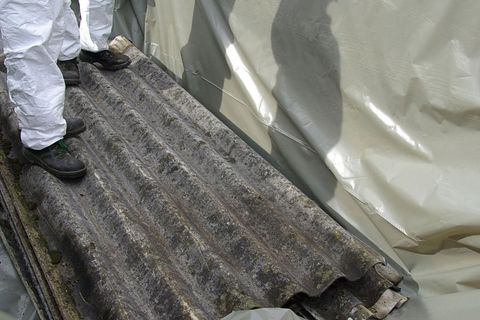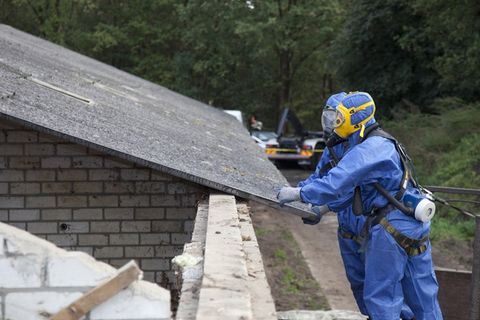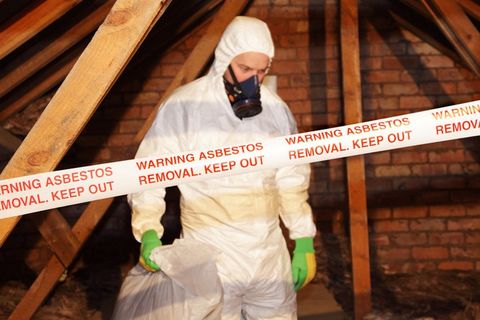Asbestos regulations for control and management
Environmental Northwest Ltd offers asbestos services in compliance with the asbestos regulations established by local authorities and regulatory bodies. Get in touch with us for asbestos surveys on any property in Blackpool.
Get in touch
Control of Asbestos Regulations 2012-2015
The Control of Asbestos Regulations 2012 came into force on 6 April 2012, updating previous asbestos regulations to take account of the European Commission's view that the UK had not fully implemented the EU Directive on exposure to asbestos (Directive 2009/148/EC).
In practise, the changes are fairly limited. They mean that some types of non-licensed work with asbestos now have additional requirements, i.e. notification of work, medical surveillance and record keeping. All other requirements remain unchanged.
What you need to know

What has stayed the same?
- If existing asbestos containing materials are in good condition and are not likely to be damaged, they may be left in place; their condition monitored and managed to ensure they are not disturbed.
- If you're responsible for maintenance of non-domestic premises, you have a 'duty to manage' the asbestos in them, to protect anyone using or working in the premises from the risks to health that exposure to asbestos causes.
- If you want to do any building or maintenance work in premises, or on plant or equipment that might contain asbestos, you need to identify where it is and its type and condition; assess the risks and manage and control these risks.
- The requirements for licensed work remain the same: in the majority of cases, work with asbestos needs to be done by a licensed contractor. This work includes most asbestos removal, all work with sprayed asbestos coatings and asbestos lagging and most work with asbestos insulation and asbestos insulating board (AIB).
- If you are carrying out non-licensed asbestos work, this still requires effective controls.
- The control limit for asbestos is 0.1 asbestos fibres per cubic centimetre of air (0.1 f/cm3). The control limit is not a 'safe' level and exposure from work activities involving asbestos must be reduced to as far below the control limit as possible.
- Training is mandatory for anyone liable to be exposed to asbestos fibres at work. This includes maintenance workers and others who may come into contact with or disturb asbestos (e.g. cable installers), as well as those involved in asbestos removal work.

What has stayed the same?
- From 6 April 2012, some non-licensed work needs to be notified to the relevant enforcing authority.
- From 6 April 2012, brief written records should be kept of non-licensed work, which has to be notified e.g. copy of the notification with a list of workers on the job, plus the level of likely exposure of those workers to asbestos. This does not require air monitoring on every job, if an estimate of degree of exposure can be made based on experience of similar past tasks or published guidance.
- By April 2015, all workers/self-employed doing notifiable non-licensed work with asbestos must be under health surveillance by a doctor. Workers who are already under health surveillance for licensed work need not have another medical examination for non-licensed work. But,medicals for notifiable non-licensed work are not acceptable for those doing licensed work.
- Some modernisation of language and changes to reflect other legislation, e.g. the prohibition section has been removed, as the prohibition of supply and use of asbestos is now covered by REACH (Registration, Evaluation, Authorisation and Restriction of Chemicals Regulations 2006).

The Duty to manage
If you own, occupy, manage or have responsibilities for non-domestic premises, which may contain asbestos, you will either have:
- A legal duty to manage the risk from this material: or
- A duty to co-operate with whoever manages that risk. The person responsible for a building (The Duty Holder) is required to manage the risk from asbestos by:
- Taking reasonable steps to find asbestos on their premises and assess the condition of these materials
- Presuming that materials do contain asbestos unless there is strong evidence that they do not
- Preparing a record of the location and condition of asbestos, or presumed asbestos, materials and assess the risks from them
- Preparing and implementing a plan to manage those risks
- Providing information on the location and condition of the materials to anyone who is liable to disturb them

Who is the Duty Holder?
- All those who have responsibility for the maintenance and/or repair of non-domestic premises have duties under this regulation. The extent of the legal duty is determined by the terms of the tenancy agreement or contract that applies. In the absence of any such agreement the Duty Holder will be determined by the degree of control the party has over the premises.
- Depending on the contract or tenancy the Duty Holder could be the landlord or tenant or even a facilities manager. In some cases, two or more parties could share the duty. The regulation also includes a duty to co-operate, which applies widely. This will, for example, require a landlord to pass information on asbestos to a new tenant. Similarly, a tenant must co-operate by allowing a landlord to gain access to a building, for example to carry out a survey.
- Also, any building surveyor or architect who have plans which show information on the whereabouts of asbestos would be expected to make these available to the Duty Holder at a reasonable cost. More detailed information can be found regarding the asbestos regulations and your duty to manage by clicking on the following link http://www.hse.gov.uk/.
Want to know more about the regulations for control and management of asbestos?
Call us on

